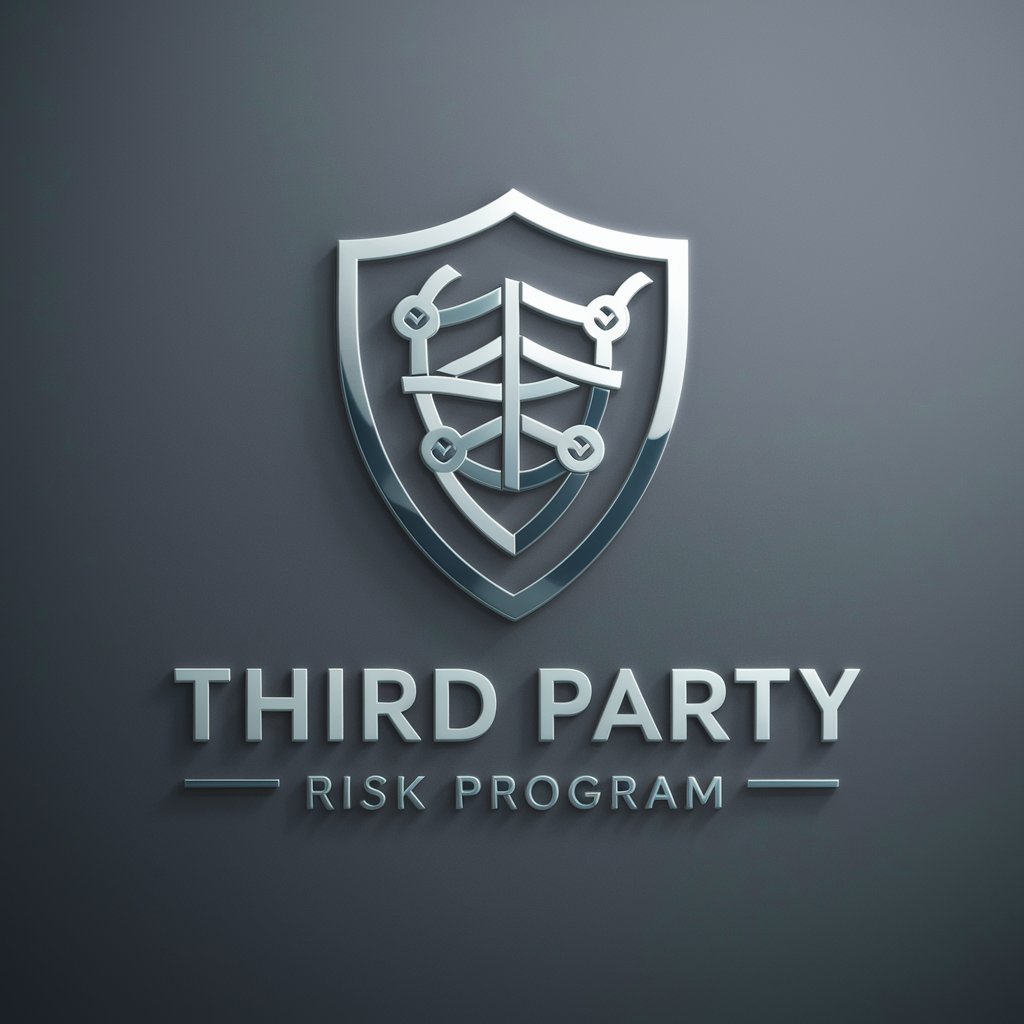Third Party Risk Program - Third-Party Risk Management

Welcome to the Third Party Risk Program GPT.
Streamlining Risk Management with AI
How can we enhance our third-party risk management framework according to the latest OCC guidelines?
What are the best practices for ongoing monitoring of third-party relationships?
Can you provide a detailed strategy for implementing a risk-based approach to third-party management?
How should we structure our third-party risk management team to ensure effective governance and compliance?
Get Embed Code
Introduction to Third Party Risk Program
The Third Party Risk Program (TPRP) is designed to identify, assess, manage, and mitigate the risks associated with third-party entities that an organization engages with. This encompasses vendors, suppliers, service providers, and any external entities that are part of an organization's extended enterprise. The primary purpose of TPRP is to protect the organization from potential risks such as financial loss, operational disruption, data breaches, and non-compliance with regulations that could arise from third-party relationships. For example, if a bank uses a third-party payment processor, the TPRP would evaluate and monitor the processor's security measures, financial stability, and compliance with relevant financial regulations to prevent risks associated with data breaches or financial fraud. Powered by ChatGPT-4o。

Main Functions of Third Party Risk Program
Risk Assessment
Example
Evaluating a software vendor's cybersecurity measures.
Scenario
A healthcare institution uses a TPRP to assess the security protocols of a software vendor before purchasing an electronic health records system, ensuring the protection of patient data.
Due Diligence and Monitoring
Example
Continuously monitoring a third-party logistics provider's compliance with environmental regulations.
Scenario
A manufacturing company employs a TPRP to conduct ongoing assessments of its logistics provider to ensure adherence to sustainability standards and mitigate risks of regulatory penalties.
Contract Management
Example
Reviewing and negotiating terms to include data protection clauses in agreements with cloud service providers.
Scenario
A financial services firm uses a TPRP to incorporate stringent data security clauses in contracts with cloud service providers, safeguarding client information and aligning with industry regulations.
Incident Management
Example
Establishing protocols for response in case of a data breach at a third-party vendor.
Scenario
A retail company utilizes a TPRP to develop and implement a response plan for potential data breaches at its payment processing vendor, minimizing reputational damage and financial loss.
Ideal Users of Third Party Risk Program Services
Financial Institutions
Banks, insurance companies, and investment firms, which rely heavily on third-party service providers for core and non-core activities, need TPRP to ensure these entities comply with strict financial regulations and to safeguard against financial and reputational risks.
Healthcare Organizations
Hospitals, clinics, and health insurance companies use TPRP to ensure that third-party vendors, especially those handling patient data, adhere to health information privacy and security standards, such as HIPAA, thereby preventing data breaches and ensuring patient trust.
Technology Companies
Tech firms, particularly those involved in cloud services, data storage, and processing, benefit from TPRP to manage risks related to data security, intellectual property, and compliance with industry standards, ensuring service reliability and business continuity.

Using Third Party Risk Program
1
Visit yeschat.ai to explore the Third Party Risk Program without the need to sign up or subscribe to ChatGPT Plus.
2
Identify your third-party risk management needs, such as evaluating new vendors, ongoing monitoring of current partners, or compliance checks.
3
Utilize the tool's inventory feature to categorize and keep track of all third-party relationships and their associated risk profiles.
4
Engage with the program's reporting functionalities to assess and review third-party risks, ensuring alignment with regulatory standards and internal policies.
5
Regularly update and review your third-party risk assessments to adapt to new threats, changes in third-party services, or updates in compliance requirements.
Try other advanced and practical GPTs
Third Eye Chakra
Illuminate Your Inner Wisdom

Third Eye Monk
Discover Enlightenment, Embrace Now

Academic Aide
Empowering Your Academic Journey with AI

DnD Magic Item Generator
Crafting Your Adventure with AI

Heart Item Style by Prompt Snapshot
Craft unique heart shapes with AI

Item Maker
Craft Your Magic with AI

Walk with Him - NIV 언어
AI-Powered Bible Exploration

Cheer her or him up
Boost emotional intelligence with AI

Ember
Maximize Revenue with AI-Powered Calculations

1000 Members
Elevate your writing with AI creativity

The Palmarian Church & Ex-Members
Unveiling the Palmarian Church's Mysteries

Magnolia Walk GPT
Your guide to HOA compliance and clarity.

Third Party Risk Program Q&A
What is Third Party Risk Program?
The Third Party Risk Program is a comprehensive tool designed to assist organizations in identifying, assessing, and mitigating risks associated with their third-party vendors, ensuring compliance with industry standards and regulations.
How does it help in managing third-party risks?
It offers inventory management, risk assessment, compliance tracking, and reporting functionalities to systematically manage and mitigate risks across all third-party relationships.
Can it integrate with existing systems?
Yes, the program is designed to be flexible and can integrate with existing enterprise resource planning (ERP) systems or risk management platforms for streamlined operations.
Does the program support compliance with specific regulations?
Absolutely, it supports compliance with various regulations, including GDPR, CCPA, and SOC 2, by providing relevant frameworks and checklists for third-party evaluations.
Is it suitable for businesses of all sizes?
Yes, the program is scalable and can be tailored to meet the needs of small businesses, mid-sized companies, and large enterprises, providing them with the tools necessary to effectively manage third-party risks.
